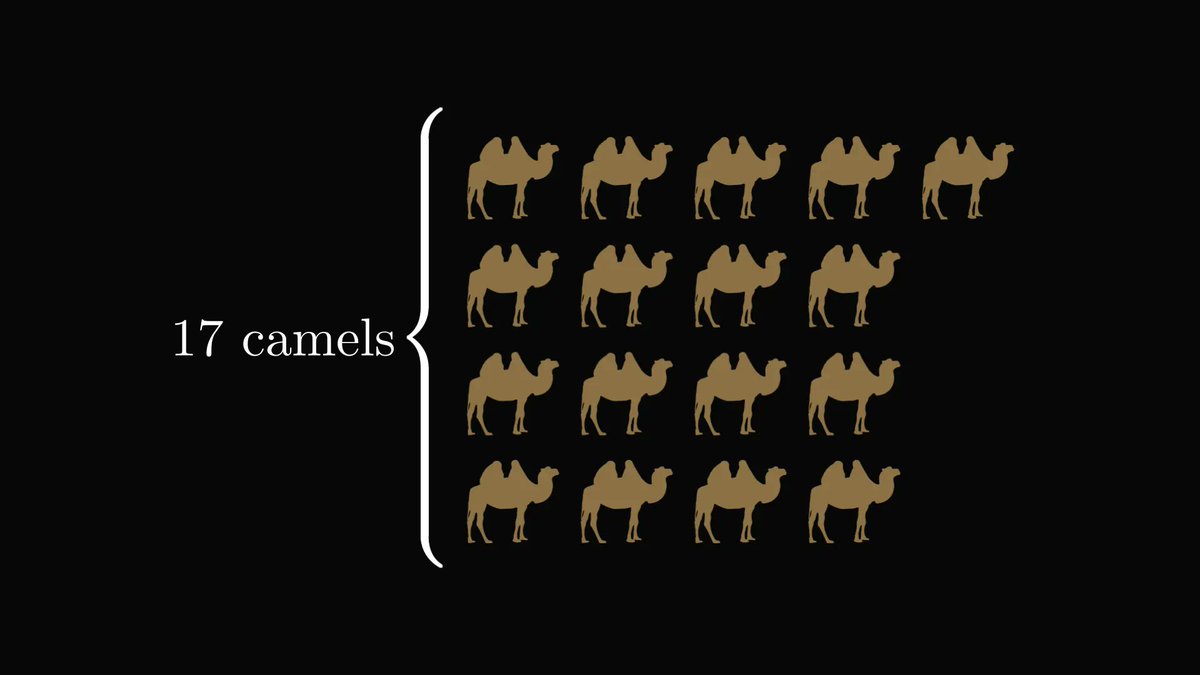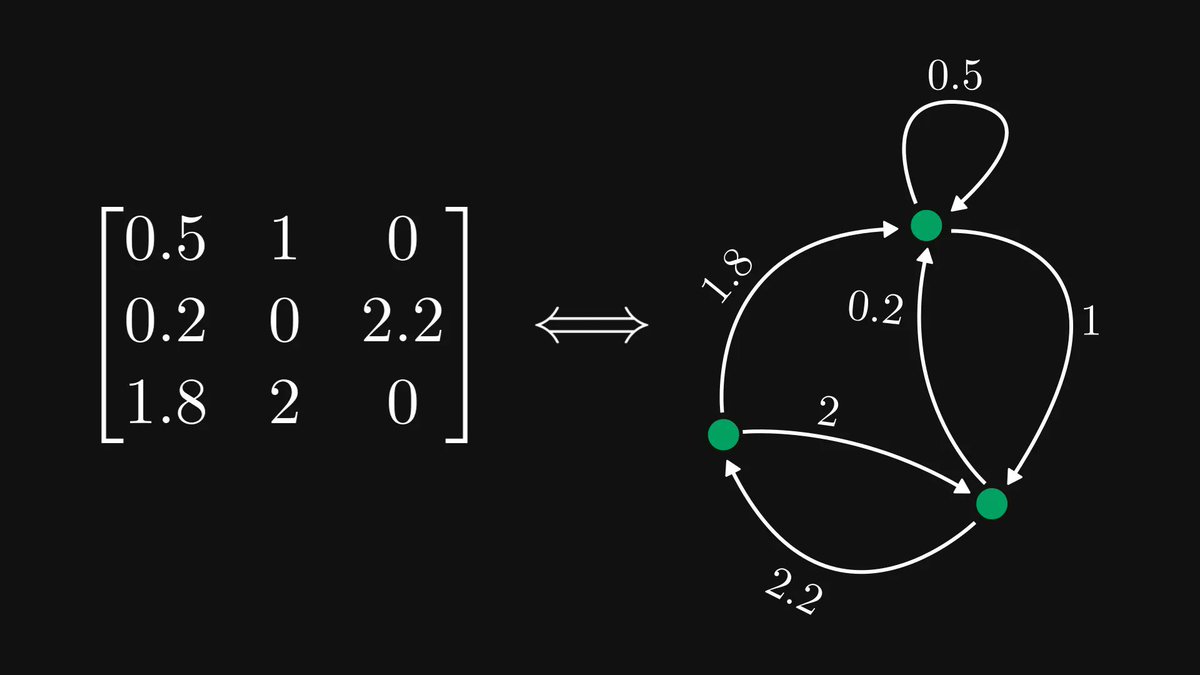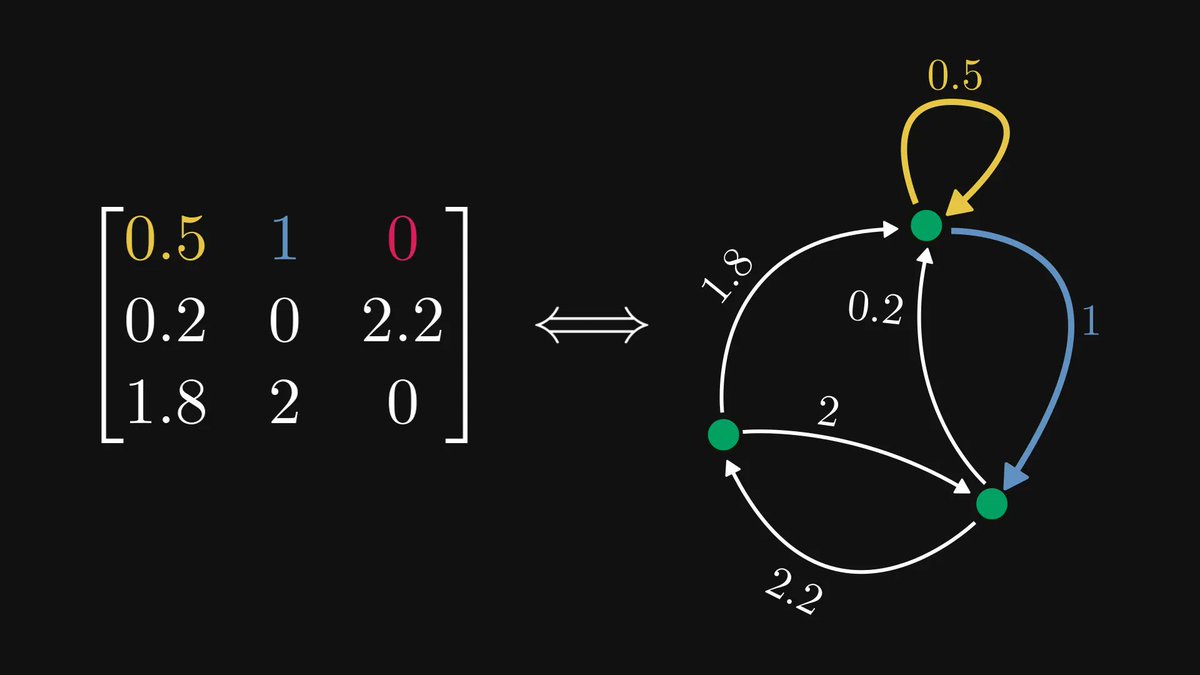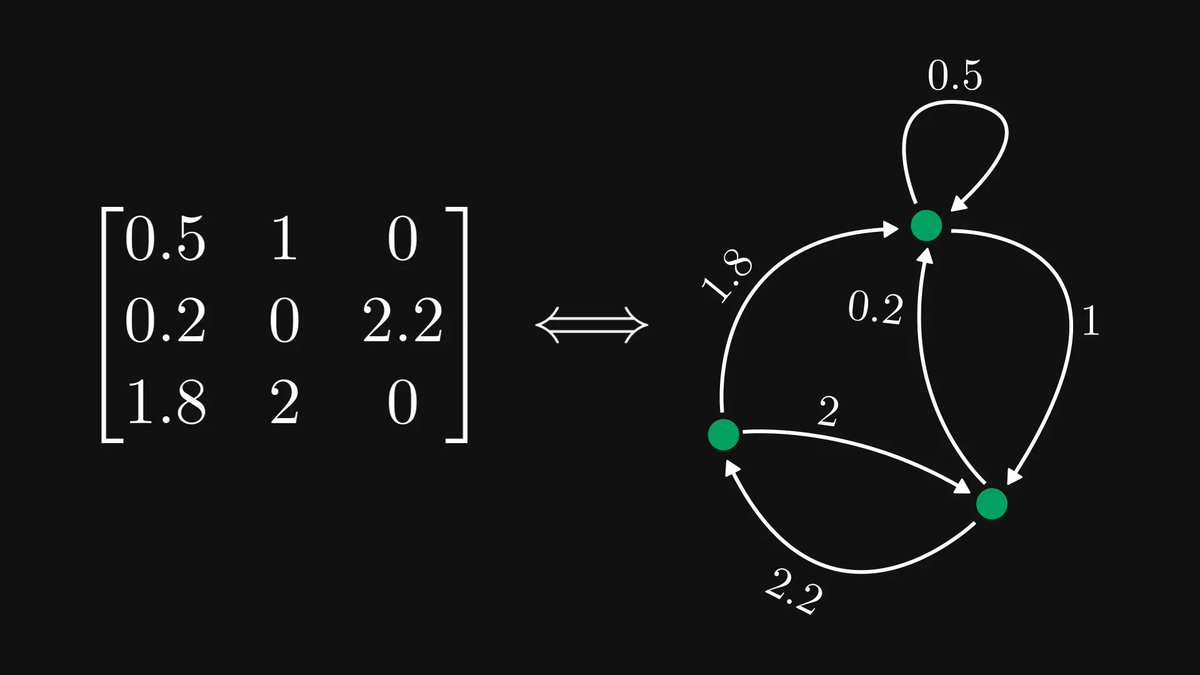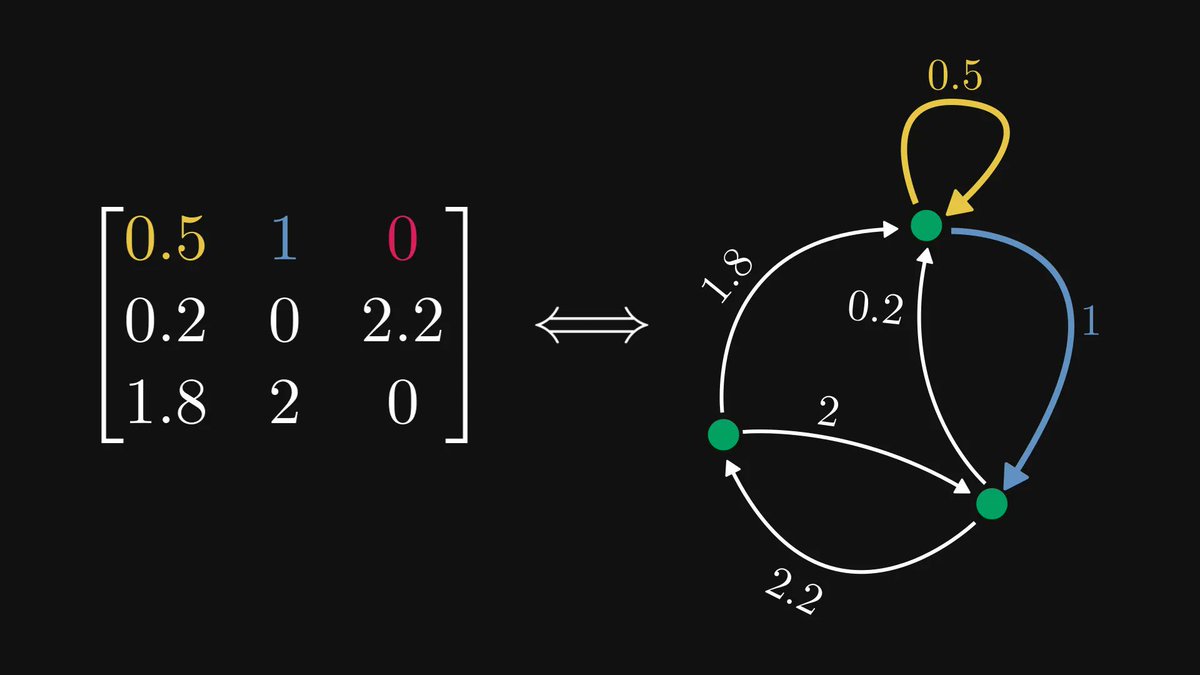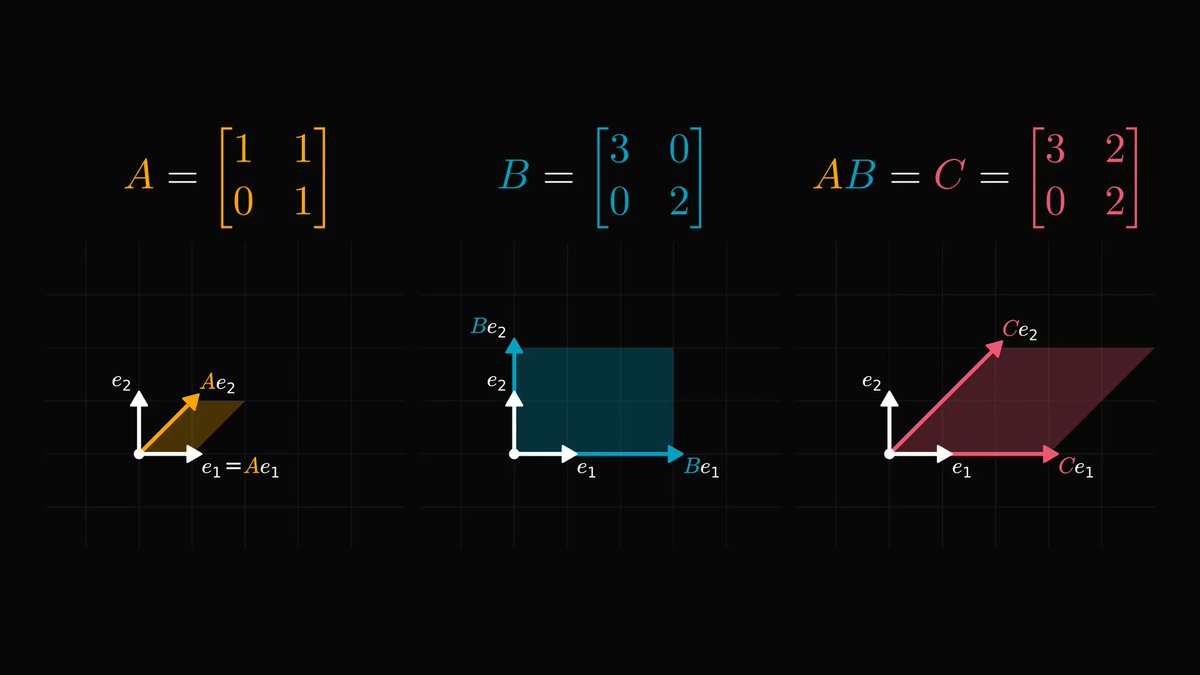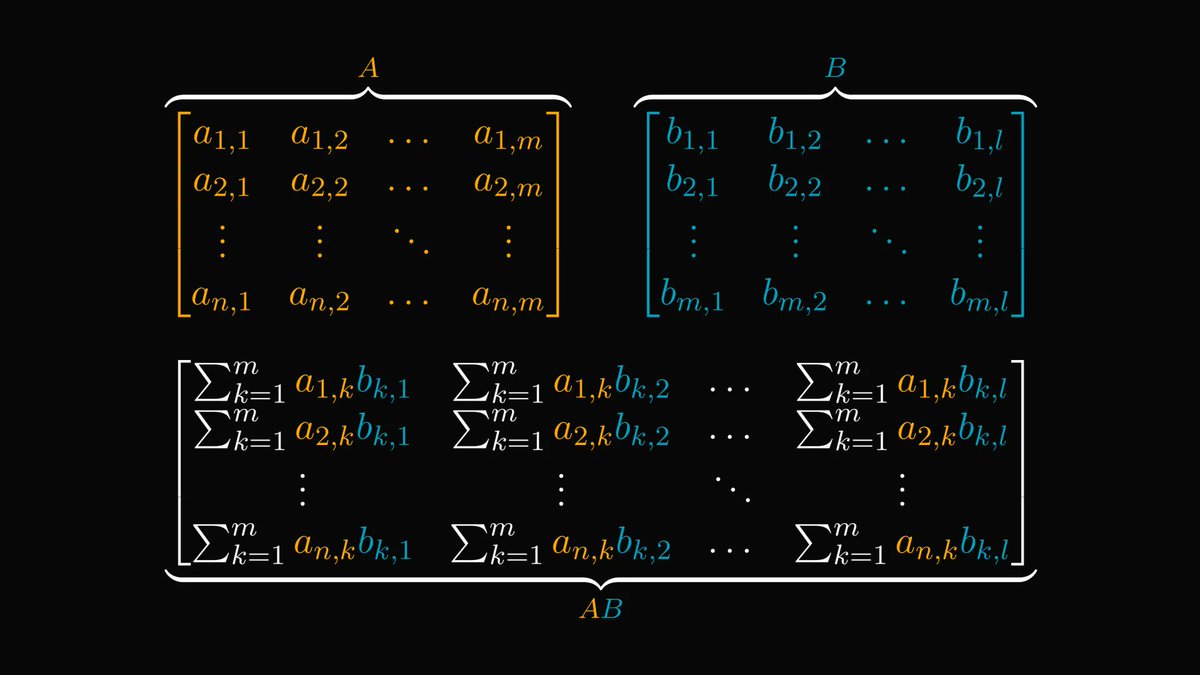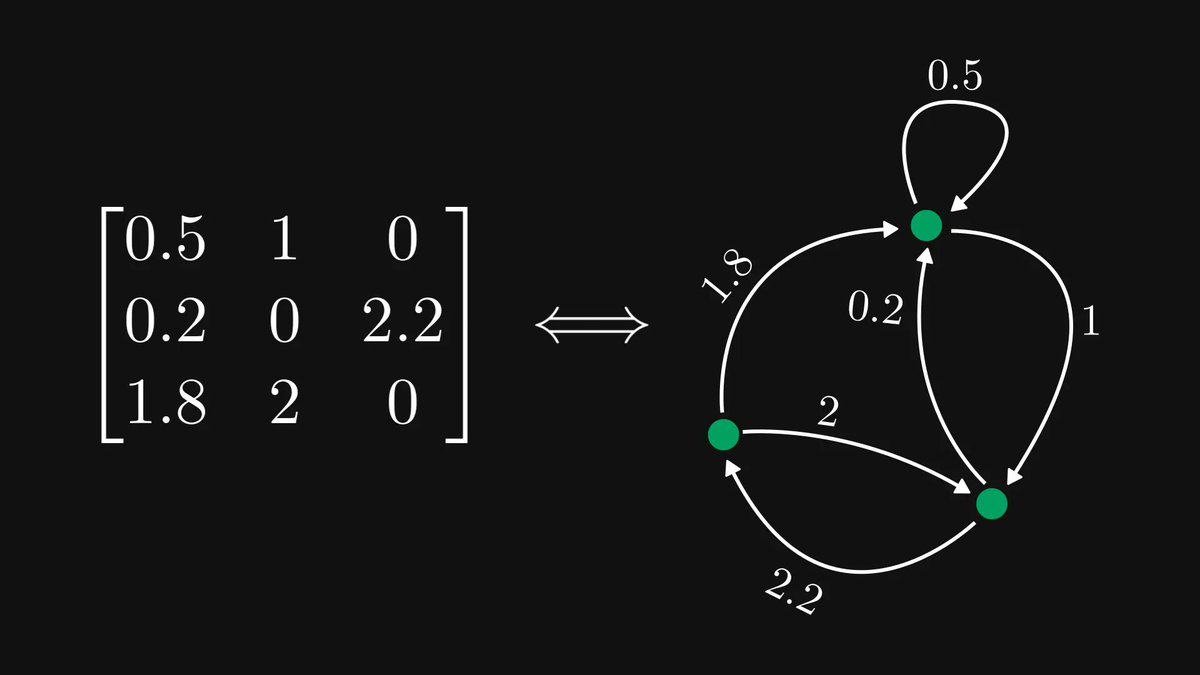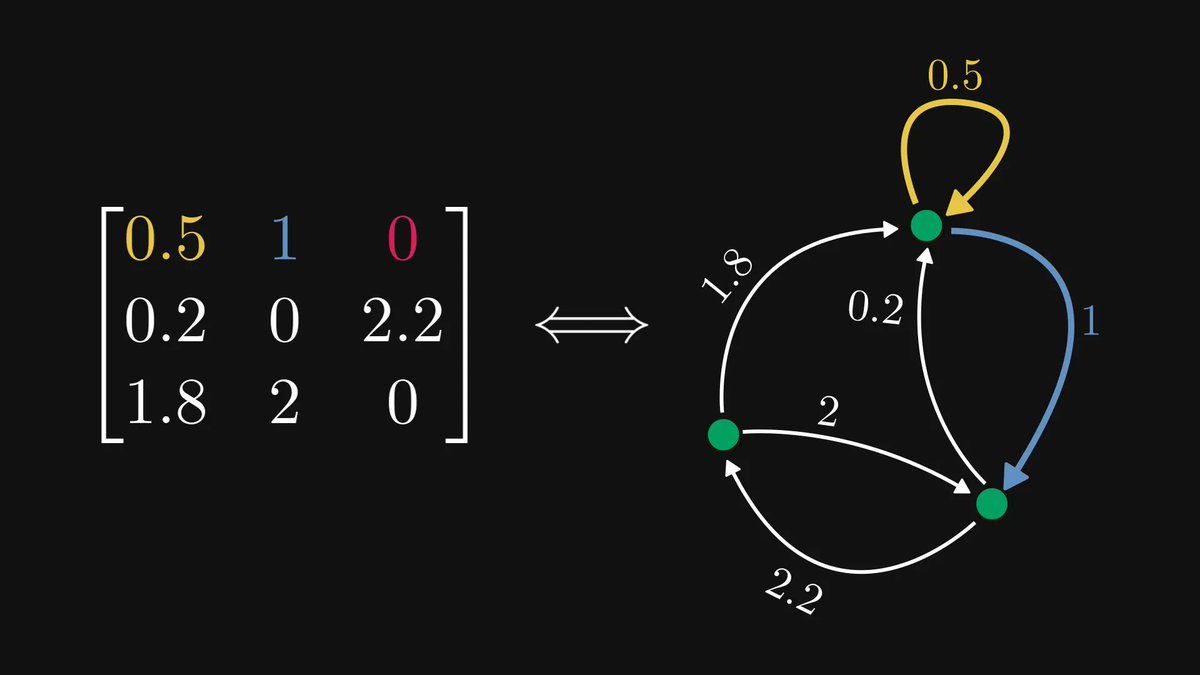Why is matrix multiplication defined the way it is?
When I first learned about it, the formula seemed too complicated and counter-intuitive! I wondered, why not just multiply elements at the same position together?
Let me explain why!
↓ A thread. ↓
1/11
When I first learned about it, the formula seemed too complicated and counter-intuitive! I wondered, why not just multiply elements at the same position together?
Let me explain why!
↓ A thread. ↓
1/11

First, let's see how to make sense of matrix multiplication!
The elements of the product are calculated by multiplying rows of 𝐴 with columns of 𝐵.
It is not trivial at all why this is the way. 🤔
To understand, let's talk about what matrices really are!
2/11
The elements of the product are calculated by multiplying rows of 𝐴 with columns of 𝐵.
It is not trivial at all why this is the way. 🤔
To understand, let's talk about what matrices really are!
2/11

Matrices are just representations of linear transformations: mappings between vector spaces that are interchangeable with addition and scalar multiplication.
Let's dig a bit deeper to see why are matrices and linear transformations are (almost) the same!
3/11
Let's dig a bit deeper to see why are matrices and linear transformations are (almost) the same!
3/11

The first thing to note is that every vector space has a basis, which can be used to uniquely express every vector as their linear combination.
4/11
4/11

The simplest example is probably the standard basis in the 𝑛-dimensional real Euclidean space.
(Or, with less fancy words, in 𝐑ⁿ, where 𝐑 denotes the set of real numbers.)
5/11
(Or, with less fancy words, in 𝐑ⁿ, where 𝐑 denotes the set of real numbers.)
5/11

Why is this good for us? 🤔
💡 Because a linear transformation is determined by its behavior on basis vectors! 💡
If we know the image of the basis vectors, we can calculate the image of every vector, as I show below.
6/11
💡 Because a linear transformation is determined by its behavior on basis vectors! 💡
If we know the image of the basis vectors, we can calculate the image of every vector, as I show below.
6/11

Because the image of a basis vector is just another vector in our vector space, it can also be expressed as the basis vectors' linear combination.
💡 These coefficients are the elements of the transformation's matrix! 💡
(The image of 𝑗-th basis gives the 𝑗-th column.)
7/11
💡 These coefficients are the elements of the transformation's matrix! 💡
(The image of 𝑗-th basis gives the 𝑗-th column.)
7/11

So, let's recap!
For any linear transformation, there is a matrix such that the transformation itself corresponds to the multiplication with that matrix.
What is the equivalent of matrix multiplication in the language of linear transformations?
8/11
For any linear transformation, there is a matrix such that the transformation itself corresponds to the multiplication with that matrix.
What is the equivalent of matrix multiplication in the language of linear transformations?
8/11

Function composition!
(Keep in mind that a linear transformation is a function, just mapping vectors to vectors.)
9/11
(Keep in mind that a linear transformation is a function, just mapping vectors to vectors.)
9/11

💡 Multiplication of matrices is just the composition of the corresponding linear transforms! 💡
This is why matrix multiplication is defined the way it is.
10/11
This is why matrix multiplication is defined the way it is.
10/11

Having a deep understanding of math will make you a better engineer. I want to help you with this, so I am writing a comprehensive book about the subject.
If you are interested in the details and beauties of math, check out the early access!
11/11
tivadardanka.com/book/
If you are interested in the details and beauties of math, check out the early access!
11/11
tivadardanka.com/book/
• • •
Missing some Tweet in this thread? You can try to
force a refresh



